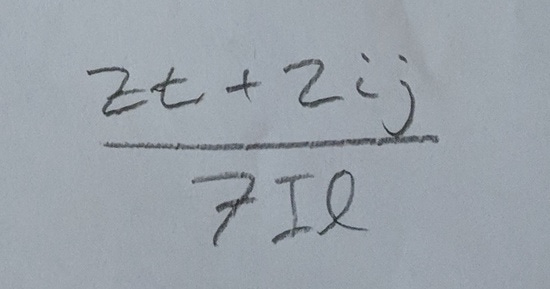Handwriting for math etc
I don't have very tidy handwriting, and for most things this is fine: there's enough redundancy in language that it will be clear from context what is a t and what is a +. When writing calculations, however, there's often a lot less redundancy and so it's more worth it to make sure distinctions aren't being lost. One way to handle this would be to have clean handwriting overall, but what I do instead is use glyphs that are more robust and remain distinct even if written poorly. [1]
Here are what I do with some tricky glyphs:

i j t + l 1 I 2 z 7 ;
It's nice if these are clear to other people, but the main goal is for them not to be confused with each other. Things to help this:
i includes a right hook
j is normal
t includes a right hook
+ is normal
l is loopy/cursive
1 is a straight line
I has top and bottom lines
2 is normal
z has a cross
7 has a cross
This lets me write thing like:

(zt + 2ij)/7Il
and still be able to read back what I wrote. This is also something I need when transcribing whiteboard coding interviews at work: [2]

for (int j = i; j < t + z; j++)
You might notice that I don't use this for the i or t in int. It's just for variables.
[1] I don't think this is original to me, but it's also something I picked up gradually as I realized that certain forms were more reliable.
[2] Yes, candidates write code on whiteboards, we transcribe it on paper, and then we type it into a computer for others to review. Someday candidates will write on laptops, I guess, but it was weird that we were doing it in 2010, and we're still doing it in 2018, so who knows.
Comment via: google plus, facebook
